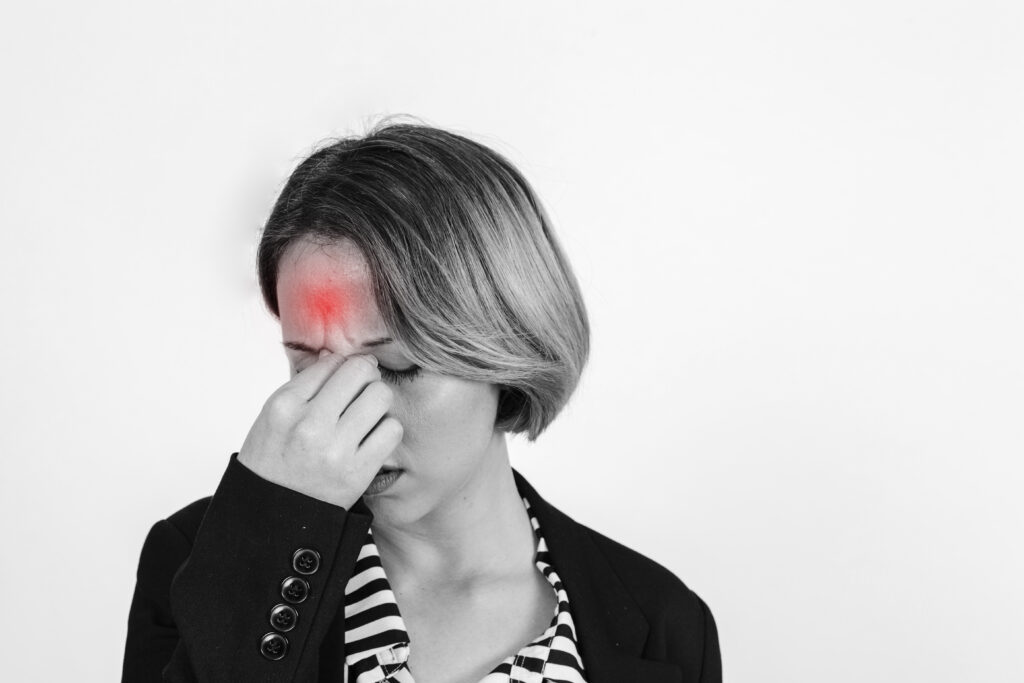Scoliosis is a spinal condition characterized by a sideways curvature of the spine. The curves are frequently S-shaped or C-shaped. Scoliosis is a problem you may have heard of, but are you aware of the pain and health risks it can cause? If so, this guide will put you through what chiropractors do for the treatment of people with scoliosis.
Most cases of scoliosis are in adolescents and arise during the growth spurt soon before puberty, however, adults with scoliosis are becoming more common. While in most cases there is no cure for scoliosis, there are treatments to provide relief and enhance patients’ quality of life. Just so you know, chiropractors in Centennial care for scoliosis in a variety of ways. This is why people with this condition in Centennial visit Campbell Chiropractic for care.
The Different Types of Scoliosis
Before screening yourself or someone else for scoliosis, it’s crucial to understand the different types of scoliosis and how they’re caused.
- Idiopathic scoliosis: Most common scoliosis and the cause is unknown. The person has existing abnormalities in the body, such as muscle spasms, rib humping, or one hip higher than the other. When a person goes from standing to touching their toes, the abnormalities stay.
- Functional Scoliosis: A person has existing abnormalities in the body, such as muscle spasms, rib humping, or one hip higher than the other, one leg shorter than the other, which might cause functional scoliosis. When a person goes from standing to touching their toes, the abnormalities disappear.
- Neuromuscular Scoliosis: Because of its severity, neuromuscular scoliosis is caused by neurologic and/or muscle abnormalities and requires the most attention from a chiropractor. The nerves and muscles in this condition are unable to support and control the spine and trunk. Scoliosis of this type can be caused by a brain or spinal cord problem, as well as other neurologic diseases including muscular dystrophy or cerebral palsy.
- Degenerative Scoliosis: After years of regular wear and tear of the vertebral discs in the back, older persons develop degenerative scoliosis. Vertebral fractures, which cause sections of the vertebrae to collapse, are the most common cause of this type of scoliosis. The change in the shape of the discs as they collapse and lose height over time causes an irregular bend in the spine.
How to Check for Scoliosis
There are several ways you can detect if you have scoliosis. First, you can do the forward bend test. To do this, bend forward at the waist with your feet together. When you do this, it might display asymmetry or unevenness in the back. This imbalance in the back, which may usually be noticed in the rib cage or hips when observed from behind, could be a sign that you have scoliosis.
You can also look for other unbalanced looks in your body posture to see if you have scoliosis. Uneven shoulders or hips, a head that is off-center or not in line with your pelvis, or a movement of one side of the spine are all possibilities. Even minor asymmetrical appearances, like the alignment or tilt of your eye line or ears, can be a symptom of scoliosis.
If these subtle indicators are difficult to spot in yourself, paying attention to how your clothes fit or even how you walk can reveal scoliosis danger signals. Look in the mirror after getting dressed in the morning for items like uneven pant legs or arm sleeves. Meanwhile, a small limp or body tilt are two signs of scoliosis to watch out for while walking.
Common Symptoms of Scoliosis
It is a fact that most occurrences of scoliosis have no recognized cause. Some conditions, such as congenital scoliosis, are recognized to have a cause. The curvature in congenital scoliosis is thought to be caused by improperly formed vertebrae that are present at birth. Since chiropractors in Centennial have a thorough understanding of musculoskeletal difficulties, diseases, and illnesses, scoliosis can be detected during the complete physical exam that all chiropractors do on new patients. Symptoms that may indicate scoliosis to a chiropractor include the following:
- Clothes appear to be hanging unevenly.
- One shoulder blade is higher than the other or protrudes more than the other.
- Hips that are unbalanced
- Breathing difficulties due to a smaller region in the chest for the lungs to expand
- Muscle spasms or chronic back discomfort.
What Chiropractic Care for Scoliosis in Centennial Entails
There are lots of things chiropractors from Campbell Chiropractic in Centennial can do to help scoliosis. Many adults with scoliosis discover that non-drug, non-invasive chiropractic treatments can help them feel better by relieving strain on their nervous system and strengthening their core muscles. Chiropractors can assist scoliosis patients to gain relief from their symptoms and regaining normal posture without surgery or other medical interventions.
Many people with scoliosis are completely unaware of any symptoms or the requirement for care. Scoliosis left unattended, can worsen without therapy and cause excruciating discomfort. Shortness of breath can occur in more severe cases due to a reduction in chest cavity space.
Scoliosis-specific chiropractic care goes outside of the usual standards to fix the curve. Scoliosis-specific adjustments are precise and mild, to gradually correct the spine into a typical spinal curve. This procedure can benefit people from various walks of life, including those who have had surgery before and don’t want to have it done again, those who want to avoid surgery, youngsters who don’t want to wear a brace, and those in most other scenarios.
Scoliosis is commonly thought of as a lateral bend in the spine, but it’s a little more nuanced than that. The cervical lordosis, which points forward in the neck, the thoracic kyphosis, which points backward in the middle of the back, and the lumbar lordosis, which points forward in the low back, are the three curves that should be present in the spine. For one or more of these three natural curves, scoliosis strains the spine in a different direction.
Scoliosis patients have large degrees of instability. If not treated appropriately, this hypermobility renders the joints unstable and puts them in danger of injury and dislocation. In scoliosis-specific adjustments, there is no twisting or turning of the neck. The neck and other joints of the body are adjusted with specific gentle adjustments for scoliosis modifications.
The first step in regaining proper spine curves is to recenter the head. An adjustment is used to provide precise forces into the bones of the neck. The vertebrae in the neck are re-trained into the proper position by these pressures. Depending on the measurements of the spine obtained from x-rays, adjustments to the back and hips may be made.
It will take a series of routine visits to see real long-term relief from your back pain and discomfort caused by scoliosis. However, you may feel some alleviation after your first visit.
Scoliosis Care in Centennial is Divided into Three Stages:
1. Plan for Evaluation and Care
The first step is to meet with your chiropractor so that they can assess your specific care needs and set goals for you.
Your chiropractor will take a complete medical history and perform a physical examination. The chiropractor may also ask for medical documents from your other doctors, as well as any imaging that was done to diagnose your scoliosis. The exam may include x-rays and some spinal adjustments to improve nerve flow and range of motion. Your chiropractor and you will talk about your symptoms and how your scoliosis impacts your daily life. During this meeting, you and your chiropractor will discuss your goals.
A care plan will be developed once your chiropractor has discussed your problem and goals with you, as well as examined your medical records and completed a physical exam. This care plan will detail the sort of care you’ll receive, how often you’ll be adjusted, and any at-home exercises you’ll be required to complete. As your care continues, your care plan will be reviewed regularly and altered as needed.
2. Exercise Schedules
Your chiropractor may recommend that you come in for adjustments a few times a week at first until your spine has adjusted to the new positions provided by chiropractic care. During this time, you would probably be advised to undertake at-home exercises. For the best outcomes, do your best to follow your care plan.
3. Maintenance Phase
When you have reached a point in your care where your pain and suffering are more controlled, your chiropractor may suggest that you transition to the maintenance phase. You will see your chiropractor for occasional adjustments during this phase, either regularly or as needed.
This phase of chiropractic care aims to keep your spine in the best possible alignment, minimizing pain and making your condition more tolerable in the long run. While you may not be able to cure your scoliosis, chiropractic care can help you live with it more comfortably. The skilled chiropractic team thoroughly assesses your issue, creates a customized care plan, and gently adjusts your spine to help you feel and function your best.
Benefits of Chiropractic Care in Scoliosis in Centennial
Seeing a chiropractor in Centennial for relief from scoliosis symptoms is a safe and cost-effective way to alleviate the pain and discomfort. But pain relief isn’t the sole benefit of chiropractic treatment for scoliosis.
Also, you may potentially have other connected problems if you have scoliosis. Neck, shoulder, and hip discomfort, as well as numbness in your limbs and headaches, or organ dysfunction are all possible symptoms. Chiropractic care can help correct spinal misalignments that can contribute to or cause various other symptoms, providing pain relief and improved quality of life.
Chiropractic can help you manage and reduce the pain associated with your scoliosis without requiring surgery. Chiropractic care can also provide pain relief similar to that provided by some drugs but without the negative side effects.
How to Prevent Scoliosis
After reading this guide, you may be wondering if there’s anything you can do to prevent your spine from bending; or if there’s anything you can do to lower your risk of acquiring this condition and the numerous symptoms that come with it.
Additionally, scoliosis cannot be prevented in the majority of cases. The majority of scoliosis instances (about 80%) are idiopathic, meaning there is no recognized cause. Idiopathic scoliosis usually manifests during puberty, so if your adolescent or pre-adolescent child has recently been diagnosed with scoliosis, it’s likely idiopathic. Because the source of the curvature in these circumstances is unclear, there is no way to predict it and no way to prevent it.
The best way to possibly prevent scoliosis is by seeing a chiropractor and getting your spine checked at an early age. The earlier the better to help maintain proper alignment of the spine and the correct curves of the spine.
Some cases of scoliosis are caused by underlying conditions like osteoporosis and can be prevented. For example, exercise and a diet rich in vitamin D and calcium can help to reduce the risk of developing osteoporosis.
Getting Chiropractic Care for Scoliosis in Centennial
While scoliosis is often easier to cure when caught early, there is no way to prevent the condition. Scoliosis cannot be prevented by activities such as excellent posture, exercise, yoga, or Pilates. Adult scoliosis induced by osteoporosis is the only kind that can be avoided. Chiropractors in Centennial can help correct scoliosis when caught early; they also can help improve nerve flow, improve muscle function, improve organ function, alleviate pain, and increase the quality of life in moderate to severe scoliosis.




